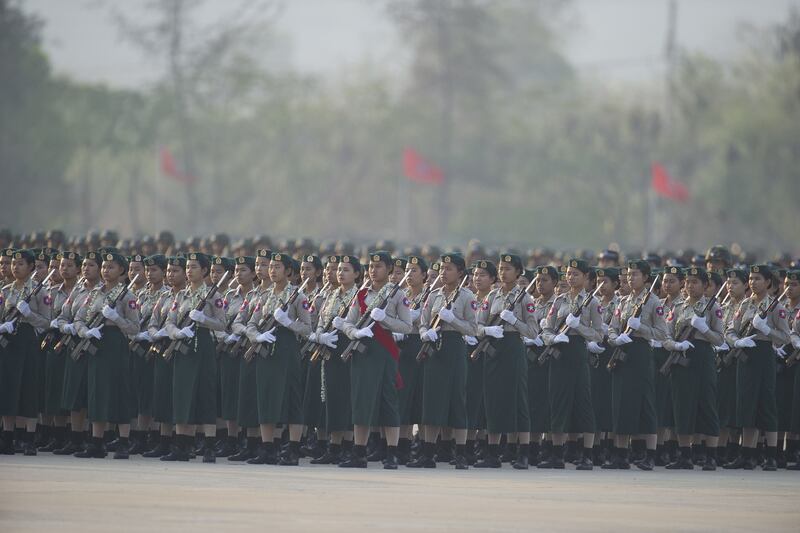On a middle-of-the-night bus ride through Myanmar a few years ago, the megawatt glow of lights shining unexpectedly from the moon-lit countryside shocked me from a bleary half-sleep.
The bus had been bumping along a dark, rough road from the bustling commercial capital of Yangon for hours. Now the rough route had become smooth, widely spaced and illuminated.
In front of me glowed an unexpected oasis of modernity in a country where electricity is still rationed, crumbling sidewalks endanger the distracted walker, and once-grand British administrative buildings are jungle-esque and filled with squatters.
This was Naypyidaw, the mysterious Burmese Oz, built under complete secrecy by the government and was, in 2005, declared the country’s official capital city despite its remote location and complete lack of inhabitants.
The city, supposedly six times larger than New York City, was completely desolate that night. Not a person and barely another car took advantage of the brightly lit super-highway cutting through it.
The buildings, too, looked like the set of an expensive movie that had recently wrapped shooting. Huge roundabouts glowed with colorful fountains.

In daylight, Naypyidaw isn’t reported to be much more lively. Other than the government employees and foreign consultants who must strike their deals there, 11-lane highways, cafes built in repurposed airplanes, and a strip of ornate hotels covered in neon lights, the Vegas-esque jungle city goes virtually unused.
In 2005, Than Shwe, the leader of the military junta that ruled Myanmar until 2011, made a surprising announcement: the government would pick up and move from the lively city of Yangon, formerly Rangoon, to a desolate area 250 miles to the north.
Baffled Burmese citizens and the international community watched as the demand came down for them to relocate their operations as quickly as possible.
“The regime’s absurd relocation of Burma’s capital to remote Pyinmana continues apace,” a 2005 diplomatic memo titled “On a Road to Nowhere” released by WikiLeaks reads, calling it “bizarre” and “illogical.”
Naypyidaw translates to Seat of the King, but the location of the new city was far from desirable. In other cables, U.S. diplomats note that Burmese officials “have faked serious health issues or opted for early retirement to avoid relocation.”
Early on, the regime was apparently threatening civil servants with prison time for not going.
Naypyidaw was kept so shrouded in mystery that there’s no official record of when construction began. The government even barred diplomatic missions from visiting, and arrested two journalists for taking photographs even a year after the official opening.
Shwe’s reasons for abandoning Yangon have still not been made clear: some believed he sought safety from a possibly uprising in the city, or wanted to move away from the warring minority tribes that the Burmese government has been brutally repressing for decades. A local legend claims he was following the advice of an astrologer.
The Burmese government claims that 1 million people live in Naypyidaw, but when The Guardian visited in March, the only pedestrians were street cleaners polishing the litter-less sidewalks.
Most egregiously, the new capital came at enormous cost—estimated at $4 billion by The Guardian.
This went to build an array of recreational activities completely incongruous with the economic reality in one of the world’s poorest countries. There’s a zoo, numerous golf courses, a 33,000-seat stadium and a water park.
The electricity blares at all hours, and Wi-Fi can be readily found. There’s even a replica of the famous gold-encrusted Shwedagon Pagoda in Yangon, but without the hoards of visitors snapping photos and offering prayers.
A year or two after its opening, Lonely Planet writer Robert Reid found the shopping district comprised 185 identical stores, but only five were open.
The housing districts, he was told, only had 10 percent occupancy. The massive city would take a long time to grow into itself. The generals, he wrote of its desolate spaciousness, had “built an SUV city for people without wheels.”
This year, Naypyidaw celebrates its 10th birthday, but visiting journalists report it’s barely developed since the government moved in.
The titles of three most recent TripAdvisor reviews for one of the city’s most popular hotels says it all: “Desolate hotel in desolate city;” “Grandly empty,” and “If you build it, they will come?”
In building Naypyidaw, Shwe was perhaps securing his legacy in the tradition of many dictator vanity projects before him, from the massive replica of St. Peter’s Basilica built by the Ivory Coast’s Félix Houphouët-Boigny, to former Congolese President Mobutu Sese Seko’s luxurious jungle palace in Gbadolite that may have cost $500 million to build.
Just as opulence couldn’t hide the failure of those regimes, neither could it for Myanmar’s junta: in 2011, a half-century of military rule ended and a democratic process was ushered in.
But as the lawmakers in Naypyidaw toil under the removed facade of blazing lights, watchdogs say full reforms have yet to reach the Burmese people.

